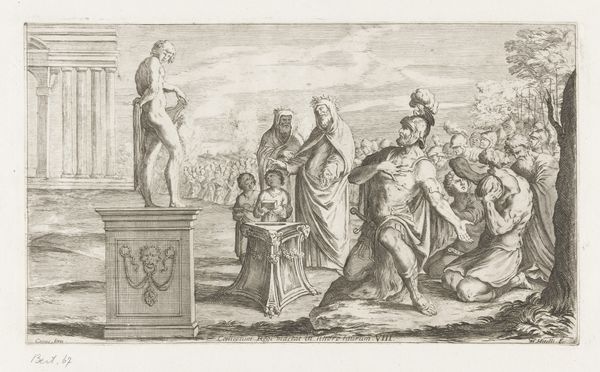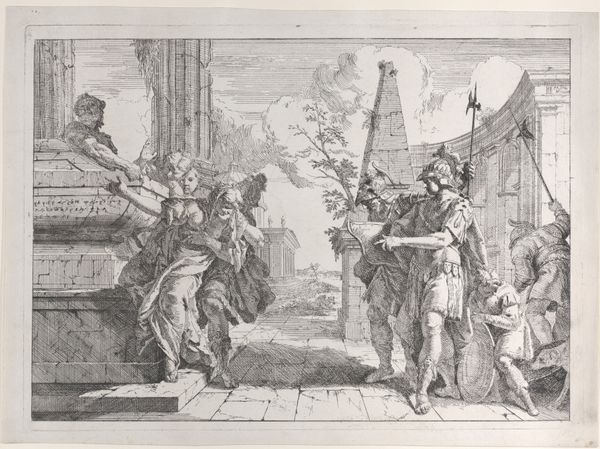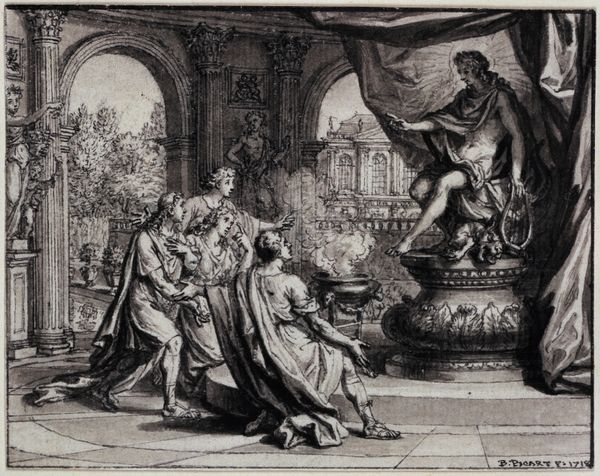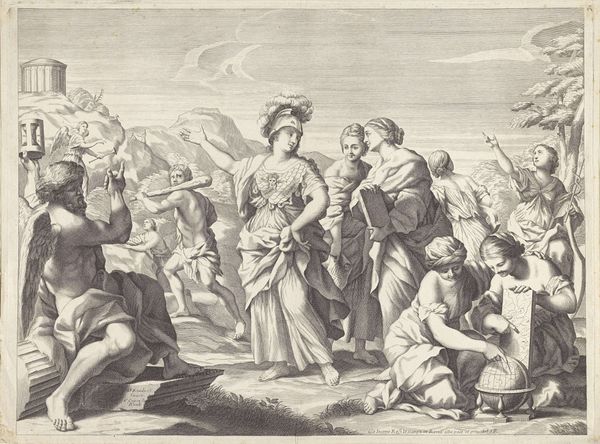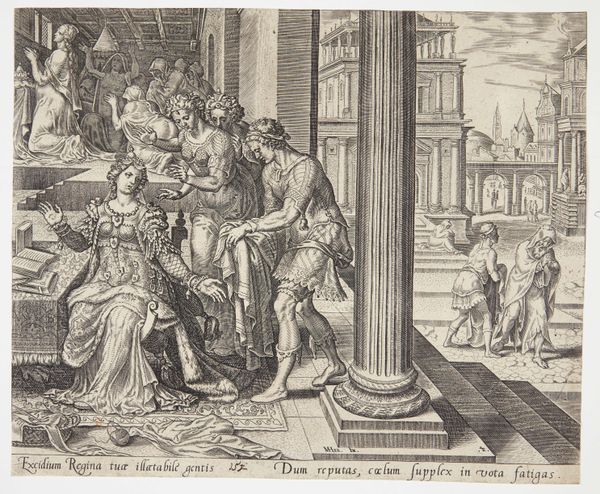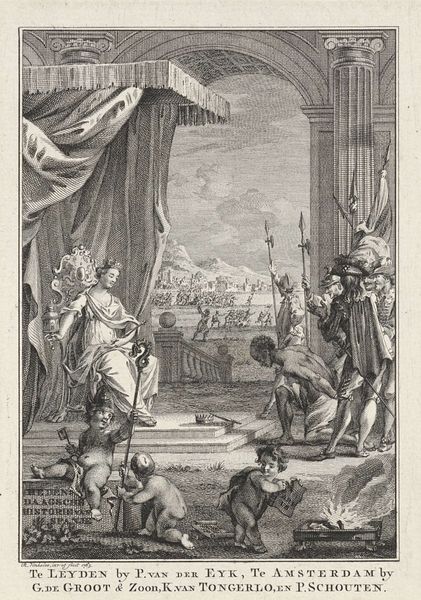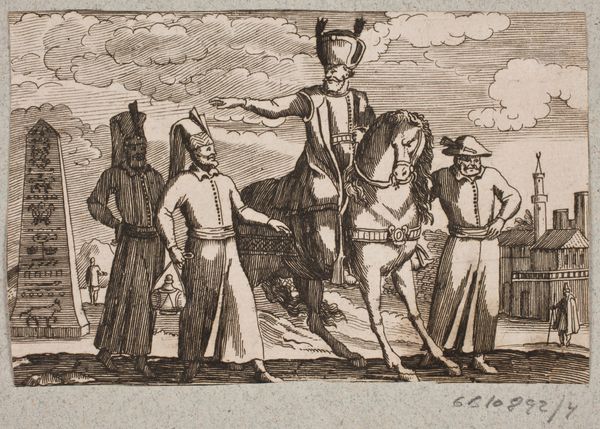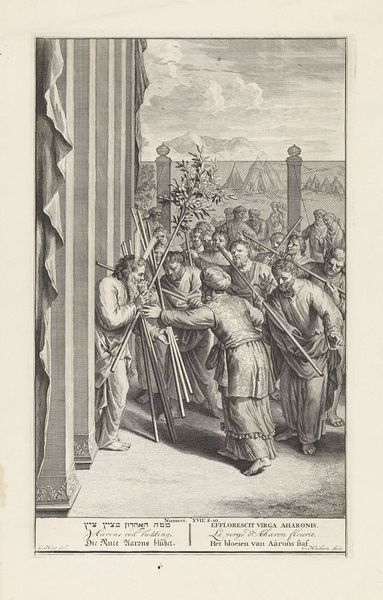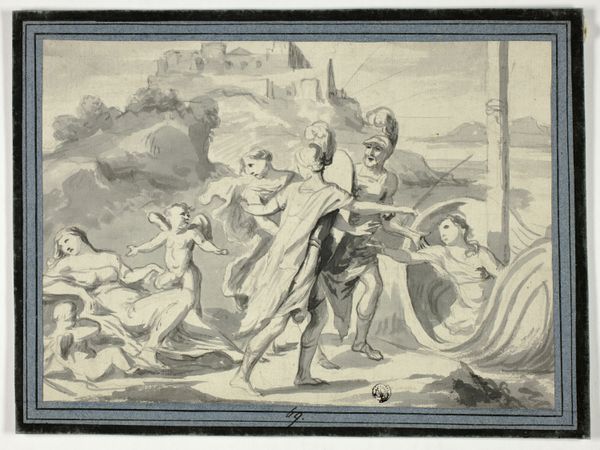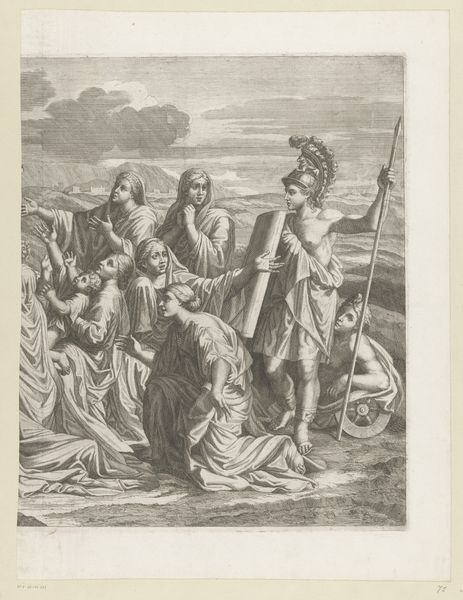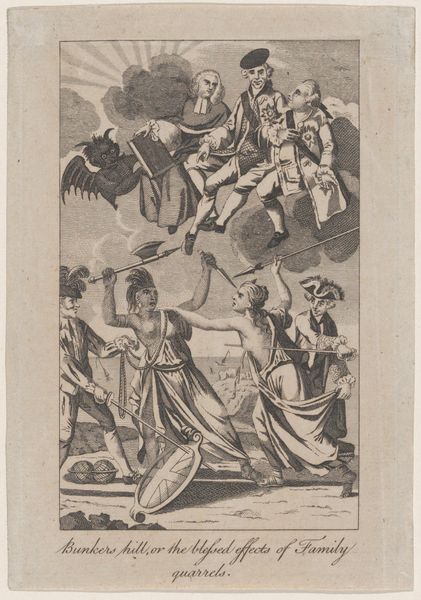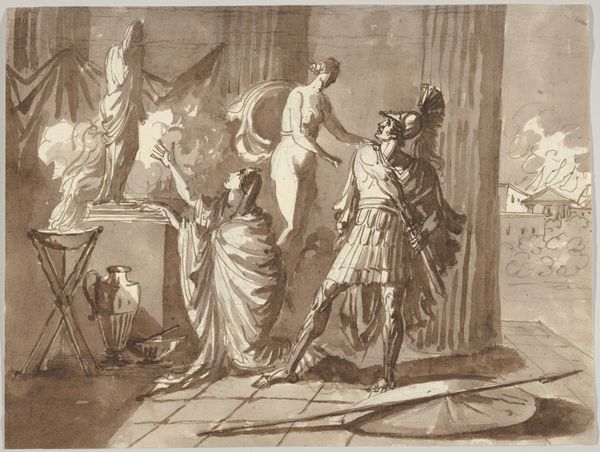
Illustration til "Erik Menveds kamp med de fredløse og Norge" 1853
0:00
0:00
print, ink, engraving
#
medieval
#
narrative-art
# print
#
pen sketch
#
landscape
#
figuration
#
ink
#
history-painting
#
engraving
Dimensions: 101 mm (height) x 111 mm (width) (bladmaal)
Curator: The piece before us is "Illustration til "Erik Menveds kamp med de fredl\u00f8se og Norge"", made in 1853. It is held here at the SMK, the Statens Museum for Kunst, created using engraving on what seems like simple paper. Editor: Simple is an understatement. The frantic lines remind me of trying to recall a dream before it fades. Is it history or myth swirling before us? Curator: Both, arguably! Historical art serves national identity formation by giving shape to certain popular notions of what national character meant or should be. The print depicts a specific narrative involving King Erik Menved, who faced off against both rebellious outlaws and Norway itself. This historical theme was quite common at the time. Editor: Oh, absolutely. Just look at the composition – Erik on what resembles a small pedestal points heroically towards a distant point, urging his knights on their horses. And on the right are huddled members of his family in the apparent safety of the palace balcony. I feel I should almost be hearing Wagner’s Ride of the Valkyries. It really does scream early nationalist Romanticism, does it not? Curator: Precisely! These engravings gained popularity in the 19th century and played an integral role in disseminating historical and literary narratives to a broader public, becoming deeply ingrained in the nation’s visual memory. Editor: So this illustration acted as visual propaganda? Almost a proto-comic book in function? A simple drawing capable of constructing historical understanding. Curator: Precisely that! But with an artistic rendering that captures a particularly stirring version of it, which may differ greatly from more historically reliable versions of those events. It is very much a construction. The seemingly ‘raw’ pen sketch enhances this. Editor: Raw is interesting; there is something intensely visceral about the medium that enhances the theme’s sense of the time. Perhaps it is more complex than simple nationalism—maybe a visual document of how history gets written. Curator: And crucially, who writes it? This print exemplifies the dialogue between visual imagery, historical narratives, and the very formation of national identity in Denmark. It serves as a valuable lens for understanding the dynamics of how the medieval past has been mobilized for 19th-century purposes. Editor: Leaving us here and now to question whether any story from the past—however simple or complicated it seems—is really ever what it seems.
Comments
No comments
Be the first to comment and join the conversation on the ultimate creative platform.

